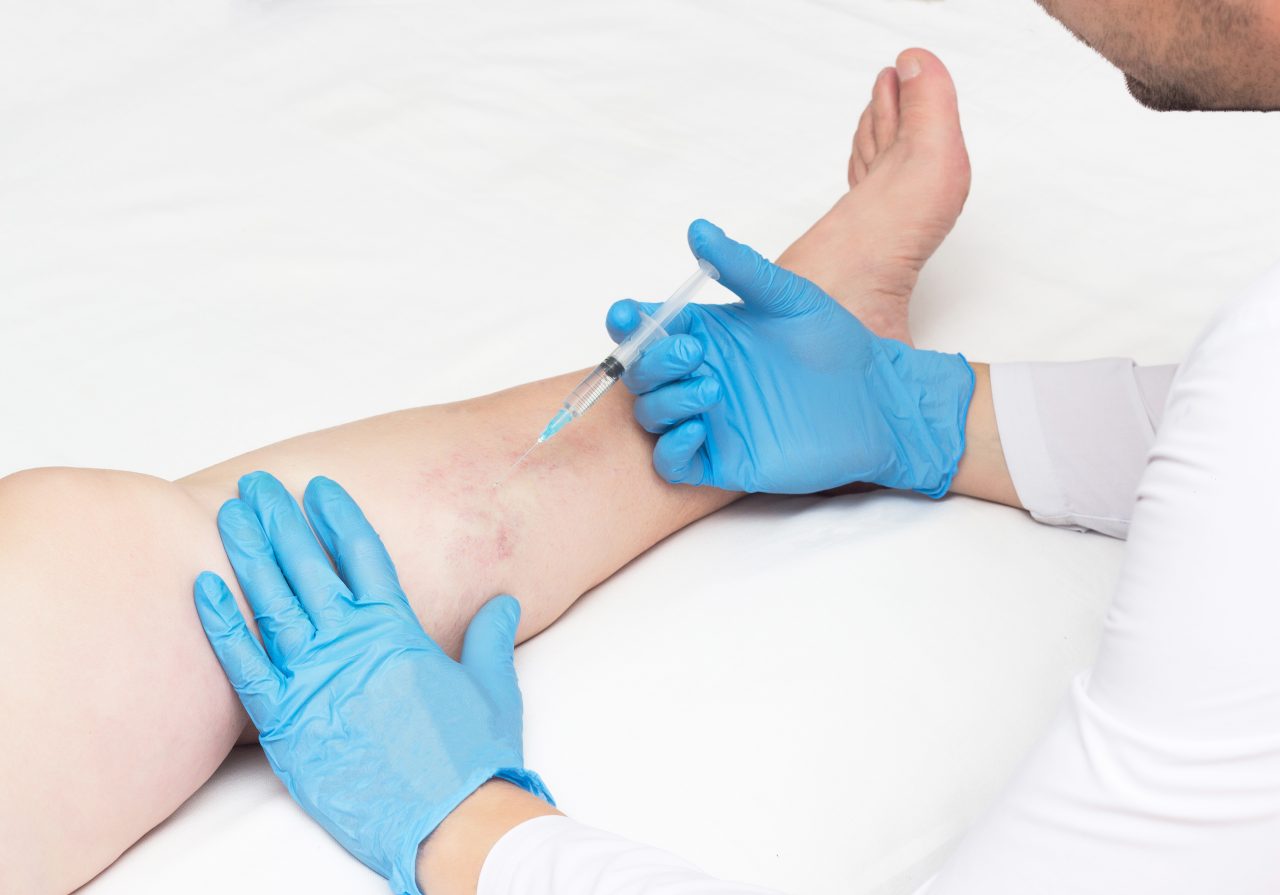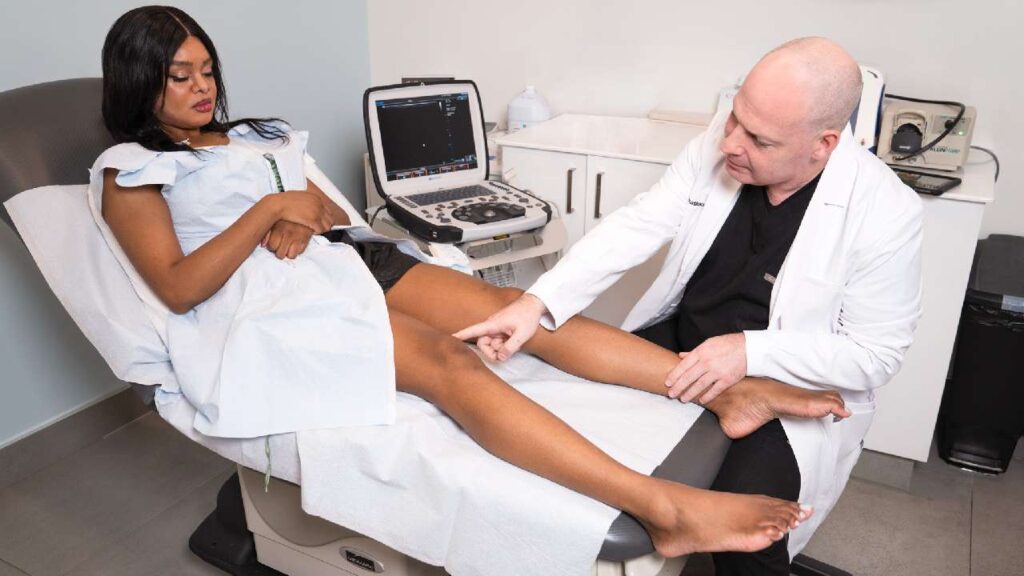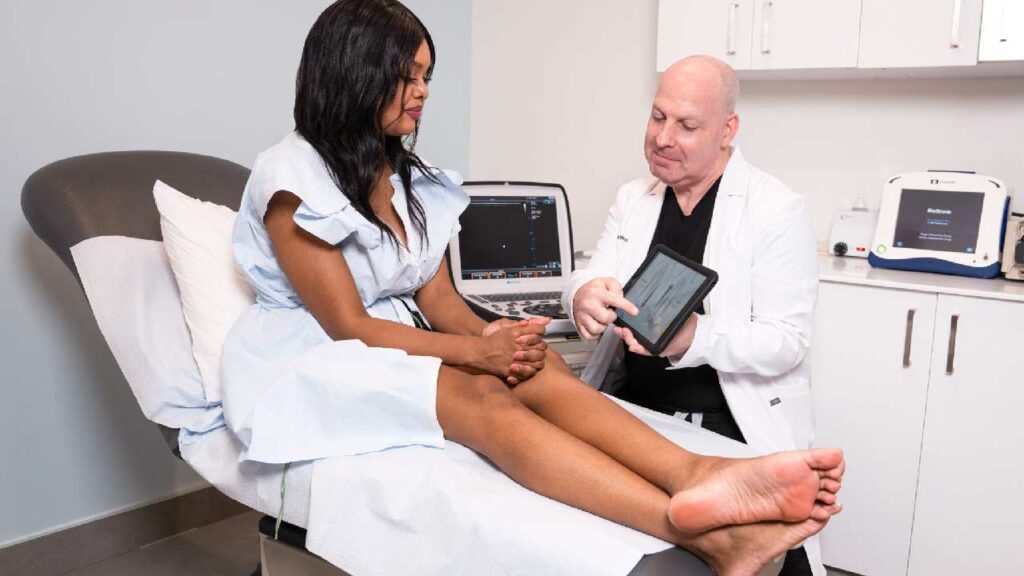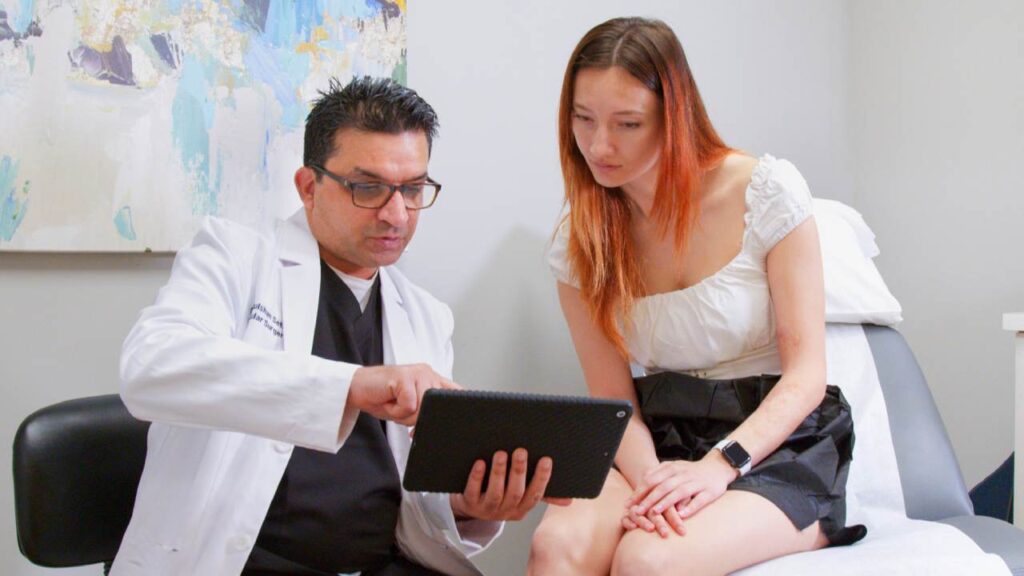1. Determine the Endovenous Laser Fiber or Laser Beam Used
There are several types of lasers used in vein procedures. Some are beamed through the skin, while others are positioned directly on the vein before they’re activated. Don’t leave your vein doctor’s office without knowing which laser fiber or laser beam was used. Recovery is different with various lasers, so you want to follow the right protocol.
Most laser procedures have easy recoveries with no downtime involved. But the exact care approach depends on which laser was used and on which part of the body. For instance, compression stockings might help after endovenous laser treatments on the legs. But these are not needed for surface laser treatments on the face. Book an appointment with Harvard-trained vein doctors in New Jersey to make sure you’re well-informed. Our vein specialists are equally skilled at treating veins and explaining the procedures.
2. Expect Redness or Swelling with Certain Vein Lasers
Redness and swelling are possible with laser treatments, so here’s what classifies as normal. For surface laser treatments, including pulsed dye lasers and intensive pulsed lasers, it’s normal to have temporary redness on the skin since these heat the vein through the skin. If you experience blistering or scabbing, however, call your vein doctor for advice.
With endovenous laser treatments, patients should not have widespread redness on the skin since these lasers are inserted through the skin and placed on the vein. But there may be some temporary redness and bruising at the injection site. A pulling sensation is also normal about a week after treatment. But if you experience sudden warmth and redness or redness that spreads across the skin, call your doctor to rule out an infection or blood clot.

3. Don’t Sit or Stand for an Excessive Period of Time
After endovenous laser treatments, it’s not advisable to sit or stand in the same position for a long period of time. Movement creates muscle contractions that help pump blood out of the veins. Changing positions also helps minimize swelling and subsequent cramping from inactivity. With endovenous laser treatments, most patients are advised to walk around immediately after the procedure and each day afterward.
However, surface laser treatment might require you to rest for a few days. Since these inflame the skin’s surface, taking a break from things that increase blood flow might expedite recovery. Ask your vein doctor whether you should stay active and to what degree. With most vein procedures, walking is encouraged, but strenuous activity should be avoided for a week or two. For patients who can’t be active, elevating the legs while resting will also reduce swelling and assist circulation.
4. Follow the Vein Specialist’s Orders Regarding Exercise
Ask your vein specialist for specific instructions regarding exercise. With endovenous laser treatments, moderate exercises like walking, swimming, and yoga are often encouraged right away. Heavy weightlifting and lengthy runs might be postponed for a week or two. With surface lasers, facial cleansers, swimming, and outdoor exercise might be adapted temporarily to allow your skin to recover. While these are safe for veins, they can delay the skin’s healing process.
5. Be Careful with Sun Exposure After Laser Treatment
Avoiding direct sun exposure is important after surface laser treatments. Since these apply heat through the surface of the skin, the skin is more vulnerable to sun damage and more sensitive to heat for a while after treatment. Apply sunscreen that’s approved by your doctor, so it doesn’t irritate your skin. And seek shade when you can for the first week or two. Some facial spider veins are actually caused by sun damage or excessive heat, so using sun protection is advised indefinitely for patients with spider veins.
6. Don’t Waste PTO on Recovery Time
When planning for vein laser therapy, it’s not necessary to request multiple days off work, unless you prefer to. Laser treatments are performed in 15-30 minutes without general anesthesia, and most patients head right back to work or their usual routine. Endovenous laser treatments use a pin-sized injection point, so there are no large wounds or bandages. Surface lasers can cause temporary redness, so it’s the patient’s decision whether to go home after treatment. But from a medical perspective, there is no recovery time required, like there is with vein surgery. So, you can save your PTO for another occasion.
7. Observe the Treated Area for Blood Clot or Infection
While these complications are rare, it’s possible to develop an infection or a blood clot after laser treatment. Signs of infection include fever, oozing fluid, and red streaks near the treatment. Signs of a blood clot include a warm, red lump that develops suddenly. It’s normal to feel a small, temporary lump under the skin immediately after treatment as the vein hardens and collapses. But if you develop a red, warm lump in the days following treatment, call your doctor.
If you experience shortness of breath or chest pain, go to the emergency room to make sure a blood clot hasn’t broken loose and caused a pulmonary embolism. Remaining active helps reduce the risk of blood clots, and if you’re susceptible to clotting, your vein doctor might recommend wearing compression stockings for a while. As mentioned, these complications are exceedingly rare. Patients are more likely to develop a blood clot or infection if they don’t treat unhealthy veins.
8. Ask the Doctor If You’ll Need to Treat Spider Veins Again
Ask your vein doctor whether you’ll need to treat spider veins repeatedly to resolve them. Most endovenous laser treatments are one-time procedures. But some patients require additional sessions if they’re treating several veins. Surface laser treatments require additional sessions more often, since they’re applied through the skin. It’s best to ask your vein doctor this prior to treatment so you can decide which procedure to choose. But also confirm your follow-up plan with the vein doctor after the procedure is complete.
To minimize the likelihood of repeating treatment, choose a minimally invasive vein doctor who’s trained in ultrasound technology. These doctors use imaging machines to find the root of the problem, position treatment precisely, and observe closure of the vein. Our award-winning vein doctors in New Jersey are trained in all of the latest ultrasound-guided procedures. With our team, the answer to, “What happens after laser spider vein treatment?” is that patients quickly resume a healthier, happier life.





